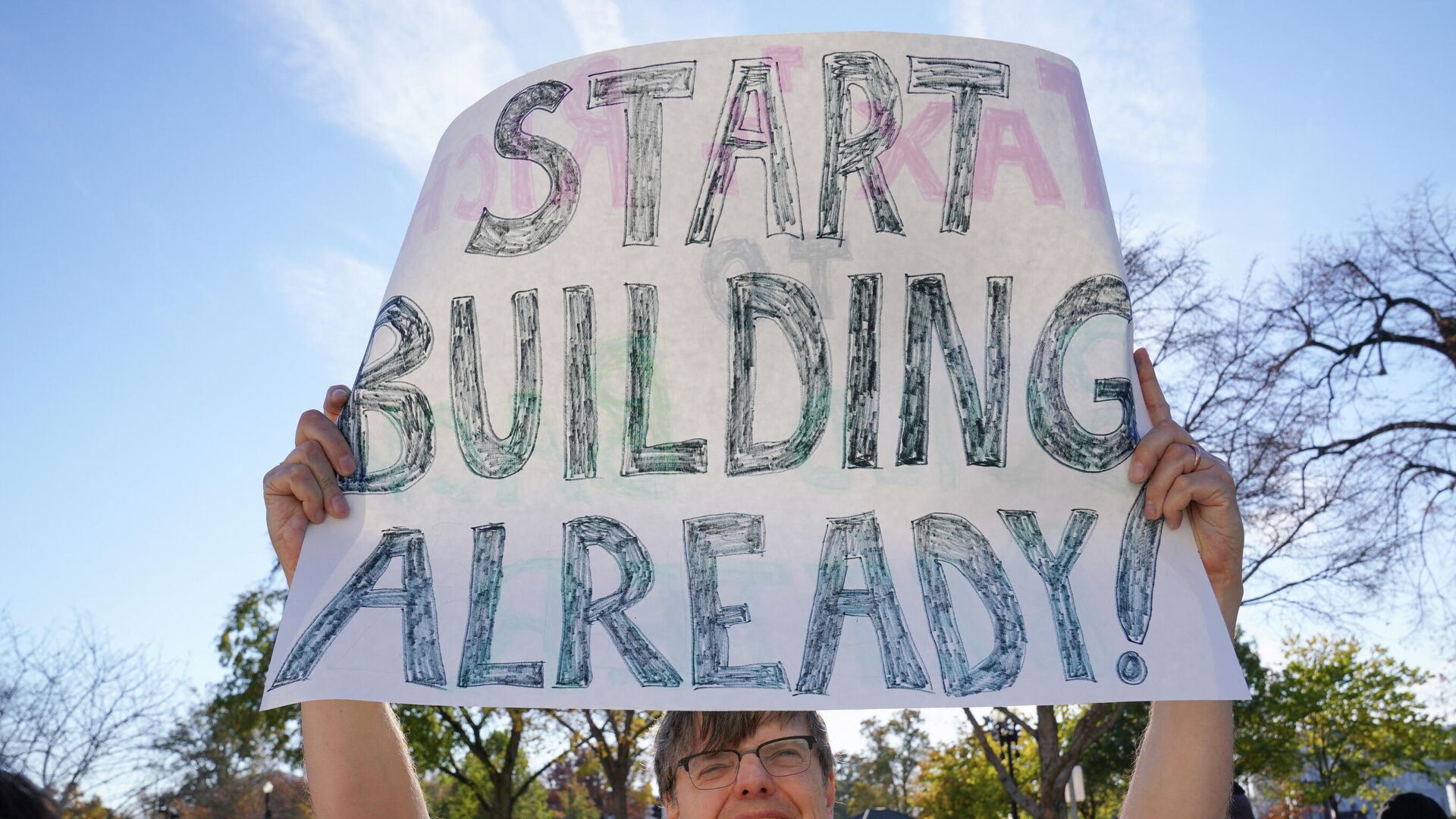https://sputnikglobe.com/20211122/obama-era-official-reveals-how-build-back-better-plan-may-compound-us-budget-deficit-national-debt-1090930616.html
Obama-Era Official Reveals How Build Back Better Plan May Compound US Budget Deficit, National Debt
Obama-Era Official Reveals How Build Back Better Plan May Compound US Budget Deficit, National Debt
Sputnik International
"The plan is fully paid for," reads the description of the Build Back Better framework on the White House website. Similar phrases have been used by President... 22.11.2021, Sputnik International
2021-11-22T15:18+0000
2021-11-22T15:18+0000
2022-08-06T13:54+0000
barack obama
joe biden
us
build back better
economy
https://cdn1.img.sputnikglobe.com/img/07e5/0b/16/1090931218_0:0:2722:1532_1920x0_80_0_0_101544fed8e3c188109d726da12a8028.jpg
Financial expert and former senior official at the Obama administration Steve Rattner has voiced doubts about how "paid for" Biden's "Build Back Better" spending package actually is, pointing at several "budget gimmicks" that may be hidden in the framework.Rattner has suggested that the only way to assert that the package is "paid for" is to use the so-called budget "gimmicks," particularly sunset clauses that are formally supposed to expire in the future but realistically have a tendency to be prolonged.Speaking on MSNBC, Rattner said about Build Back Better that it's "very hard to see that it doesn't add to the deficit," given that the plan not adding to the deficit was "one of the administration's biggest selling points."Pondering the current state of the US economy, Rattner refrained from asserting that Build Back Better may massively fuel inflation but noted that "when you have an inflationary pressure, the last thing you want to do is add to it."Not everyone appears to agree with Rattner. Brian Deese, director of the White House's National Economic Council, still believes that Build Back Better is a fiscally responsible plan that will pay for itself over time.Illustrating his point, Deese referred to measures like the tax reform, which would impose a 15 percent minimum for highly profitable corporations.A similar point has been echoed in the Build Back Better framework, which says that "the plan is fully paid for by asking more from the very largest corporations and the wealthiest Americans."The Build Back Better sweeping package, which envisages some $1.75 trillion in spending for social benefits, infrastructure, and climate aspirations has been greenlighted in the House after some drama within the Democratic party. Concerns about the bill pushing for excessive spending were raised by some moderate Democrats, and even after the House greenlighted the bill, reports now suggest that it can face cuts in the evenly-divided Senate. Earlier, Biden already had to ditch some of his priorities in order to reduce spending and unite the Democrats on his agenda.
Sputnik International
feedback@sputniknews.com
+74956456601
MIA „Rosiya Segodnya“
2021
News
en_EN
Sputnik International
feedback@sputniknews.com
+74956456601
MIA „Rosiya Segodnya“
Sputnik International
feedback@sputniknews.com
+74956456601
MIA „Rosiya Segodnya“
barack obama, joe biden, us, build back better
barack obama, joe biden, us, build back better
Obama-Era Official Reveals How Build Back Better Plan May Compound US Budget Deficit, National Debt
15:18 GMT 22.11.2021 (Updated: 13:54 GMT 06.08.2022) "The plan is fully paid for," reads the description of the Build Back Better framework on the White House website. Similar phrases have been used by President Joe Biden to promote the plan, while critics have retorted that trillions envisaged for social benefits, infrastructure, and climate may negatively impact the US national debt and inflation.
Financial expert and former senior official at the Obama administration Steve Rattner has voiced doubts about how "paid for" Biden's "Build Back Better" spending package actually is, pointing at several "budget gimmicks" that may be hidden in the framework.
Rattner has suggested that the only way to assert that the package is "paid for" is to use the so-called budget "gimmicks," particularly sunset clauses that are formally supposed to expire in the future but realistically have a tendency to be prolonged.
"The funny thing about temporary programmes and extensions? They have a history of becoming permanent," Rattner tweeted. "If we’re going to build back better, we need to be honest about long-term costs."
Speaking on MSNBC, Rattner said about Build Back Better that it's "very hard to see that it doesn't add to the deficit," given that the plan not adding to the deficit was "one of the administration's biggest selling points."
Pondering the current state of the US economy, Rattner refrained from asserting that Build Back Better may massively fuel inflation but noted that "when you have an inflationary pressure, the last thing you want to do is add to it."
"We’re setting the stage essentially for trillions of dollars of more government deficit and debt," he said.
Not everyone appears to agree with Rattner. Brian Deese, director of the White House's National Economic Council, still believes that Build Back Better is a fiscally responsible plan that will pay for itself over time.
Illustrating his point, Deese referred to measures like the tax reform, which would impose a 15 percent minimum for highly profitable corporations.
"So when you look at the impact of those policies in the aggregate, it would reduce the deficit by about $112 billion in this decade," Deese said in a Fox News Sunday interview. "In the second decade, this bill would reduce the deficit by more than $2 trillion."
A similar point has been echoed in the Build Back Better framework, which
says that "the plan is fully paid for by asking more from the very largest corporations and the wealthiest Americans."
The Build Back Better sweeping package, which envisages some $1.75 trillion in spending for social benefits, infrastructure, and climate aspirations has been greenlighted in the House after some drama within the Democratic party.
Concerns about the bill pushing for excessive spending were raised by some moderate Democrats, and even after the House greenlighted the bill, reports now suggest that
it can face cuts in the evenly-divided Senate. Earlier, Biden already had to ditch some of his priorities in order to reduce spending and unite the Democrats on his agenda.




